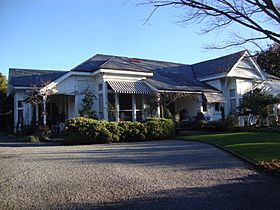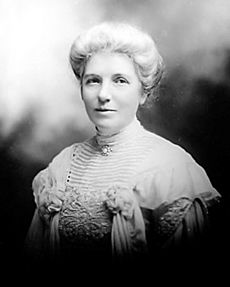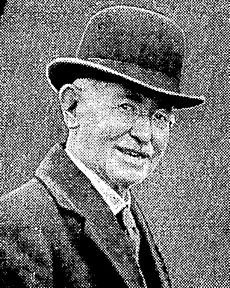Kate Sheppard House facts for kids
Quick facts for kids Kate Sheppard House |
|
|---|---|

Kate Sheppard House in 2012
|
|
| General information | |
| Type | Residential home |
| Location | Ilam |
| Address | 83 Clyde Road |
| Town or city | Christchurch |
| Country | New Zealand |
| Coordinates | 43°31′25″S 172°35′17″E / 43.523637°S 172.588132°E |
| Owner | Heritage New Zealand Pouhere Taonga |
| Height | |
| Roof | slate |
| Technical details | |
| Structural system | timber |
| Floor count | one |
| Designated: | 10 December 2010 |
| Reference #: | 9325 |
The Kate Sheppard House is a special historic home in Christchurch, New Zealand. It's located in the suburb of Ilam, right next to the University of Canterbury. This house was once the home of Kate Sheppard, a very important leader in New Zealand's fight for women to have the right to vote. She lived here for 14 years during the time she was most active in this campaign.
Later, another important person, John Joseph Dougall, who was the 30th Mayor of Christchurch, lived here with his family. The house is now owned by the New Zealand government. It is looked after by Heritage New Zealand because of its huge historical importance related to Kate Sheppard.
Contents
The House's Story


The land for the Kate Sheppard House was bought in November 1887 by Walter Sheppard. He was Kate Sheppard's husband. The land was about 2 acres in size. It used to be part of the large estate owned by the Deans family.
The Sheppards' new home was built next to Kate's younger sister Isabella's house. Isabella's husband had bought their land a few years earlier. Kate's older sister Marie also lived nearby. At that time, the area was quite rural, about 3 miles from the centre of Christchurch. The Sheppards moved into their new villa in 1888.
A Hub for Change
When Kate Sheppard became the leader of the women's suffrage movement, many important people visited her at this house. These visitors included strong supporters like Members of Parliament John Hall and Alfred Saunders. Other notable people like Rev Leonard Isitt and Tommy Taylor also visited. They would later become well-known figures.
This house became a key place where plans were made for the campaign to get women the right to vote. Many important discussions and meetings happened right here.
Changes in Ownership
In 1902, Walter Sheppard retired. He and Kate decided to move back to England. On April 3, 1902, they sold the house to John Joseph Dougall. He was a well-known lawyer. Mr. Dougall lived in the house with his wife and four children. When he passed away in 1934, his son Leslie, who was also a lawyer, inherited the house.
Leslie Dougall sold the house in 1939 to Helen Nicoll. In 1944, the land around the house was divided. The property became smaller, reaching its current size. Over the years, the house had several other owners. One owner, Dr Anthony Allison, lived there from 1956 to 1985 and also ran a medical office from the house.
Andrew Everist and his wife Julia bought the house in December 1985. At first, they didn't know how historically important the house was. They only found out in 1993. This was when New Zealand celebrated 100 years since women got the right to vote. This celebration brought a lot of attention to Kate Sheppard and her work.
Government Purchase
In 2018, just before the 125th anniversary of women's suffrage, Julia Burbury (who was living in the house) put it up for sale. On September 18, 2018, Jacinda Ardern, who was the Prime Minister at the time, announced that the New Zealand Government wanted to buy the house. The goal was to protect its important history.
On September 19, 2019, it was officially announced that the New Zealand Government had bought the house. It is now managed by Heritage New Zealand. This means the house will be preserved for future generations to learn about Kate Sheppard and the fight for women's voting rights.
Heritage Status
The Kate Sheppard House is officially recognized as a heritage building. It was registered by Heritage New Zealand on December 10, 2010. It has a special registration number, 3659, and is classified as a Category I listing.
This Category I listing means the house has outstanding historical importance. It received this high status because so much of the women's suffrage campaign was organized and led from within its walls. It is a very important place in New Zealand's history.

